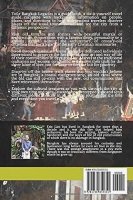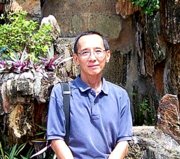- Home
- Democracy Monument
- 2006 coup
The 2006 coup in Bangkok
the coup of roses
By Eric Lim
2006 coup - The political mood
Bangkok in the April summer heat was seething with political agitation. Earlier in the year, the PM Taksin Shinawatra sold his entire holdings in Shin Corp to Temasek, the Singapore government investment company.
Shin Corp owned the major cell phone operator in Thailand, a satellite, a TV station, a domestic budget airline and a property company.
There are strict limits on foreign ownership of telecommunications and local airlines in Thailand. The sale caused a national uproar.
Were you caught in the 2006 coup in Bangkok? Share your coup experience
To make matters worse, the law governing limits on foreign holdings of such industries was raised from 20% to 49% just a day before the deal was announced.
The deal netted a tax-free sum of 73 billion baht (US$1.95 bn) and rankled ordinary tax payers. In the raging emotions, it mattered little that Thailand had no capital gains tax.
For a government facing accusations of corruption and nepotism, aggravated by the abrasive and autocratic Taksin, this deal was the last straw. This contentious issue in early 2006 sparked the chain of events that led to the 2006 coup later in September.
In the April snap elections, that was boycotted by the opposition, the ruling party won again. This election was later nullified by the Constitutional Court as parties were paid to put up token opposition. Fresh elections were set for October 2006.
By July, conflict between the pro and anti Taksin camps was getting
increasingly acrimonious. Taksin won't resign and his critics can't get him out.
This impasse and the daily bickering paralyzed the caretaker
government.
2006 coup – Conflicts with the
military
To add fuel to fire, Taksin tried to influence the annual army promotions list, a prerogative jealously guarded by the military. His move was seen as an attempt to promote the Class 10 officers (his classmates in military academy) over their seniors.
In August, the army was accused of an assassination attempt with a car bomb
near the PM's residence. The sacking of a general, investigations and arrest of
officers pushed the situation closer to the brink.
2006 coup – The pre-coup planning and preparations
The first tactical move in the 2006 coup was made two months earlier in July. Several Class 10 officers holding battalion commands were transferred to non-combat positions. This move weakened the Taksin loyalists.
In a distant base to the north, soldiers sensed a coup two weeks before when they were ordered to wash the M41 tanks and support vehicles, fit auxiliary weapons and vehicle accessories. This was done in small batches of vehicles under the cover of routine maintenance.
A day before, all vehicles were given a complete change of oils and
lubricants. With the arrival of tank transporters, the big move was
on.
2006 coup – The forces deployed
The forces deployed for the 2006 coup were:
- The Special Forces from the Special Warfare Center in Lopburi 100 km north
of Bangkok. (General Sonthi the army chief is a Red Beret)
- The 1st Army in Bangkok
- The 2nd Army based in the north-east
- The 3rd Army based in the north
19 September 2006 coup – The execution
On that fateful day of the 19th, the PM Taksin was in New York scheduled to address the United Nations General Assembly.
At 1900 hours, 10 bus loads of fully armed and equipped Special Forces troops from Lopburi entered Bangkok.
That was the trigger point. The 2006 coup had been set in motion.
From 2130 - 2230 hours, normal TV programs started to go off the air channel by channel, replaced by royal music and films. That set Bangkok buzzing.
Troops were occupying all the TV stations, the key targets in any coup.
Taksin must have got wind of the coup because he tried to announce a state of emergency and the arrest of the army chief via satellite.
Only one station, Channel 9, agreed to air this a little after 2200 hours. But this was stopped minutes later.
By the time CNN broke the news of the 2006 coup to the world at 2200 hours, tanks and troops were fully deployed in the city. Government House, the seat of power, was seized.
Troops secured key junctions in the city, manning checkpoints and checking traffic.
At 2300 hours the coup was officially announced. The statement, made at regular intervals, ended with an apology to the public for the inconvenience caused!
By midnight, CNN and BBC transmissions were blacked out. Local TV announced the suspension of the 1997 constitution, the Constitutional Court, both houses of Parliament and cabinet.
2006 coup – The day after
On the morning of 20 September 2006, more troops and tanks were seen entering Bangkok along the Vipavadi-Rangsit Highway.
These were the reinforcements from units outside Bangkok.
The coup leaders were tightening their grip on the city making any counter-measure near impossible.
Martial law was imposed. Public demonstrations and assemblies of more that five persons were banned. The military council promised to hand over to an interim government in two weeks.
Four ex-ministers deemed close to the deposed premier were ordered to report to Army Headquarters. They remained in military custody.
2006 coup – The coup of roses
Actually it wasn't as drastic as it appeared. The 2006 coup in Bangkok was, in many ways, a coup of contradictions.
Some have described it as an undemocratic use of force to overthrow a democratically elected government that has systematically subverted the democratic institutions in the country.
Even the original name adopted by the coup leaders was shrouded in respectability, the Council for Democratic Reform under a Constitutional Monarchy.
For every Thai who despised Taksin, another supported him. For a nation weary from the seemingly endless political deadlock, the coup might even be a welcomed relief or last resort.
A Thai journalist noted wryly that the troops were showered with roses and not bricks. Indeed the public response to the troops from the onset was warm and friendly. So was the behavior of the troops towards the people.
The morning after the 2006 coup, children were clamoring on an armored personnel carrier as if it were some playground equipment. Soldiers chatted merrily with foreigners and Thais alike.
It transpired a few days later that they were under strict orders to keep on smiling! As the days past, yellow roses adorn tanks. People offered soldiers food and water.
These gifts turned out to be more than just token offerings. By the end of September, it was reported that the army was running low on funds for food and fuel for the troops.
(The Thai budget year starts on 1 October each year. In the political turmoil, no new budget was passed.)
Snapping photos with troops in the 2006 coup was popular. Like the young lady cheekily pointing a rifle at a soldier with his hands up in mock surrender (the M16 assault rifles carried by the troops were not loaded). Or the bridal couple, who had their wedding photo with a military guard of honor and tank.
When a local radio station sponsored a troupe of bare midriff dancers in skin tight costumes to entertain the troops, that was the limit. The army banned further displays of such frivolity. Soldiers also were prohibited to allow members of the public to handle weapons.
These scenes gave a measure of the mood of the day.
2006 coup – The aftermath
On 1 October 2006, General Surayud Chulanont, ex-Privy Councilor and ex-chief of army, was appointed the 24th Prime Minister of Thailand.
On the same day, the troops started their withdrawal from the city. The military council promulgated an interim charter appointing themselves the Council for National Security with powers to appoint and sack the PM and the government.
Taksin flew from New York to London and is still there with his family.
The four ex-Ministers who were arrested were released on the day the interim PM was appointed.
The managing director of TV channel 9, the only channel to broadcast Taksin's declaration of emergency, resigned shortly after the coup.
The people await fresh elections in a year's time and a new constitution, the 17th in 74 years of constitutional government.
We can only hope that this constitution will last longer than the last one. It's anyone's guess if the 2006 coup will be the last.
Update January 2008
A national referendum held on 19 August 2007 passed the 17th constitution.
After the general elections on 23 December 2007, a new civilian government took office in late January 2008
On 28 January 2008 the new Thai parliament voted Samak Sundaravej as the new Prime Minister of Thailand.
This makes the 72 year old Samak the 25th and the oldest Prime Minster of the
country. The new cabinet was announced two days later.
Taksin returns to Thailand
On 28 February 2008 at 0953 hours Bangkok time, a Thai International flight
from Hong Kong touched down at Suvarnabhumi Airport. Judging from the waiting
crowd and banners, this was no ordinary flight. On board was the former Prime
Minister, Taksin Shinawatra.
Taksin is back after 17 months of exile following the coup on 19 September 2006. His return was to answer charges of corruption in a 772 million baht land deal. Upon arrival, he was taken to the Supreme Court to hear the charges against him. He is out on a million baht bail.
His return seems to have brought events of 2006 one full circle. Back then massive street protests and allegations of corruption culminated in the military coup in September 2006. The military junta banned the Taksin’s Thai Rak Thai party and barred 111 members from politics, including Taksin.
Results of the last elections show that he and the party associated with him is still as popular. His party stalwarts who survived the ban form the majority in parliament under the mantle of the People’s Power Party. His loyalists are slowing taking up key positions again.
His return is well received by most Thais many of whom are still his staunch supporters. Even for those who are not, the nation is tired of more political bickering and unlikely to support further confrontation.
Taksin has vowed to stay out of politics. In any case, he’s banned for five years. Will this be the last chapter to the 2006 coup?
For a history of the other coups in Bangkok and to return to the Democracy Monument.
For other coups
Tour Bangkok Legacies - Kindle paperback edition
If you are an independent traveller, here's a handy paperback, Tour Bangkok Legacies, which will help you along as you explore the streets of Bangkok and discover its old treasures. It's complete with historical descriptions and directions on how to get to these places.
My Kindle paperback edition

Search Tour Bangkok Legacies with DuckDuckGo
For other coups
My Journey through Thailand
Part I The First Steps
My Kindle edition

My Smashwords edition





